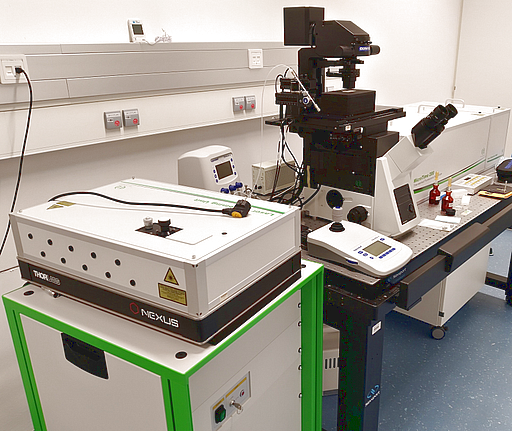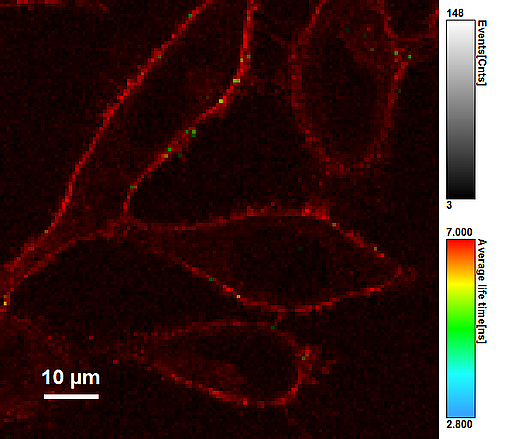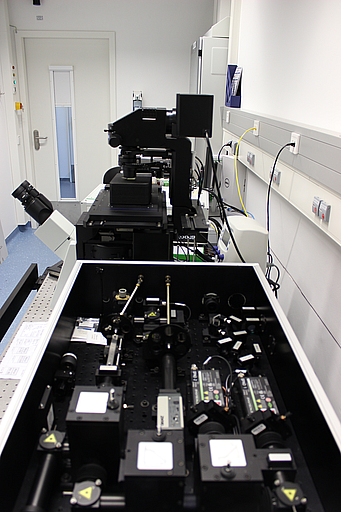
Confocal scanning microscopy - the MicroTime200 (PicoQuant) - in combination with a multi-laser set-up and highly efficient avalanche photodiode detectors (APDs) presents a modular system that offers a high flexibility (exchange of filter sets) to perform experiments requiring high spatial and temporal resolution. The high photon detection efficiency by single-photon-counting enables single molecule experiments with a multiparameter readout of biological and synthetic samples.

The Instrument combines different single molecule fluorescent spectroscopic techniques such as:
The set-up offers 2D- and 3D-imaging techniques like fluorescence lifetime imaging (FLIM) or FLIM-FRET. The applicable laser lines and detection filters provide a high flexibility in experiment design and cover typical FRET-pairs like:
Using such a multi-parameter approach it will be possible to investigate the role of complex solvents and the native cellular environment on biochemical processes, such as
and therefore advancing the understanding of such processes in living cells.

Our MicroTime200 set-up consists of an inverse confocal IX 73 microscope (OLYMPUS), equipped with highest quality optics (water immersion objective 60x/NA 1.2; oil immersion objective 100x/NA 1.45; air objective specialized for near IR light 20x/NA 0.45; …) and four picosecond pulsed lasers (1-40 MHz repetition rate; excitation wavelength: 481 nm, 532 nm, 594 nm and 637 nm), four red sensitive SPAD detectors and a nIR sensitive PMT all allowing time correlated single photon counting (TCSPC). Numerous dichroic mirrors, beam splitter, bandpath and longpath filter guarantee selective detection of multiple fluorophores at the same time. Next to the piezo scanner, that allows 2D- and 3D-imaging and accurate point positioning, the integrated software enables the user to easily set up and analyse experiments.
Laboratory Manager
Biology
Room:
ZEMOS 1.29
Phone: +49 234 32 -
24740
E-Mail
Physical
Chemistry II
Room:
NC 6/25
Phone: +49 234 32 -
29946
E-Mail